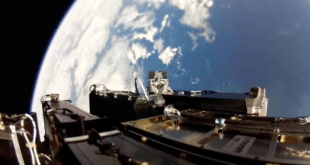Exploring Mars is more than just a scientific endeavor—it’s a journey toward establishing a sustainable human presence on the Red Planet. Essential resources such as water and oxygen, both for survival and fuel, are critical to this mission. Among the most promising solutions is harvesting the Martian subsurface ice, which could be transformed into drinkable water, oxygen, and hydrogen-based rocket fuel. However, accessing these valuable resources buried beneath Mars’ surface layers poses significant engineering and environmental challenges. Robotics technology, specifically designed for water ice drilling, is becoming the cornerstone of this groundbreaking endeavor.
The Importance of Martian Subsurface Ice
Mars’ Surface and Atmosphere: A Dry, Icy Landscape
Mars’ surface is a barren and dry environment, with almost all of its water frozen either in the polar ice caps or embedded as subsurface ice across various regions. Unlike Earth, where water is abundant and accessible, Mars’ atmospheric and geological conditions make finding and using water a formidable task. However, the ice beneath Mars’ surface is an essential resource that holds promise for sustaining future human missions and enabling deeper space exploration.
Human Sustenance: A Vital Resource for Life
For any future Mars habitat to support human life, a reliable source of clean, drinkable water is paramount. The presence of subsurface ice could fulfill this need, providing water not only for drinking but also for essential activities like food production and hygiene. By tapping into this frozen resource, mission planners could reduce the amount of water transported from Earth, a critical factor given the distance and cost involved in interplanetary logistics.
Rocket Fuel: Powering Exploration with In-Situ Resources
Water ice on Mars could be a key ingredient for producing rocket fuel. Through a process known as electrolysis, water molecules can be split into hydrogen and oxygen, which, when combined, form the basis for rocket fuel. Accessing these elements directly on Mars would enable astronauts to refuel for return missions or to propel further exploratory missions within the solar system. This capability could transform Mars into a strategic launch point, offering a more sustainable and cost-effective approach to deep space exploration.
Life Support Systems: Generating Breathable Air
Water ice is also a potential source of oxygen, which could be extracted and used to create breathable air for Mars-based habitats. By generating oxygen directly from Martian ice, missions could reduce their reliance on Earth-based oxygen supplies, supporting more sustainable and longer-duration stays on Mars. This would allow for safer, more flexible mission planning, ensuring that life-support systems remain operational without relying solely on Earth’s supply chain.
The Need for Sustainable Resource Extraction
With the nearest human habitat supply line millions of miles away, a sustainable method to access and convert Martian ice into usable resources is critical. Advances in robotic drilling and ice extraction technologies are paving the way for future missions to not only survive on Mars but thrive with a stable supply of essential resources. As humanity looks to expand its presence beyond Earth, harnessing Martian ice could be the key to achieving long-term exploration and habitation in the solar system.
Scientific Potential of Martian Ice
Beyond its practical applications, Martian ice holds secrets about the planet’s climate history and possible signs of past life. Advanced drilling efforts are poised to unlock these insights, making ice drilling not only a resourceful activity but also a cornerstone for scientific discovery on Mars.
Challenges in Drilling for Ice on Mars
The Role of Robotics in Ice Drilling
As humanity sets its sights on Mars, developing robotic systems for ice drilling is crucial. Engineers and scientists are creating highly specialized robots to withstand the harsh Martian environment and autonomously drill, sample, and analyze the Martian subsurface. Here’s how cutting-edge robotics is shaping the future of Martian water ice extraction:
Autonomous Drilling Systems
Autonomy is a fundamental requirement for Martian drilling operations due to the planet’s remote location and communication delays. NASA’s early robotic concept, the Resource Prospector, laid the groundwork by autonomously drilling and analyzing Martian soil while sending data back to Earth. Modern robots utilize AI-driven algorithms to perform complex tasks such as adjusting drilling speeds, navigating obstacles, and assessing soil composition in real-time. For instance, the Mars Ice Mapper, an upcoming mission concept, includes advanced decision-making capabilities that enable the system to modify drilling parameters on the fly, enhancing efficiency and minimizing the risk of equipment damage.
Thermal and Percussive Drilling Techniques
Standard Earth-based drilling techniques are not suitable for the dense, frozen Martian soil. To overcome this, thermal and percussive drilling methods are being developed. Thermal drilling involves using heat to melt ice, creating pockets of water for extraction. Percussive drilling, on the other hand, uses a combination of vibration and pressure to break through tough regolith layers and reach subsurface ice. NASA’s HP3 “mole” instrument on the InSight mission, though challenged by Mars’ unexpectedly dense soil, provided valuable insights into adapting percussive techniques for Martian conditions, highlighting the need for specialized modifications to standard methods.
IceDrill Technologies
Specialized IceDrill systems are emerging as essential tools for Martian exploration. NASA’s VIPER mission, designed initially for lunar ice, features a modular IceDrill that combines thermal and mechanical techniques to reach and sample subsurface ice. This technology is adaptable to the Martian environment, capable of adjusting to varying depths in different regions of Mars where ice layers may be deeper or shallower. Such versatility will be critical for future Mars missions that may need to extract water ice from diverse and unpredictable terrain.
Power and Heat Management Systems
Operating in Martian temperatures requires robust power and heat management. Radioisotope power systems (RPS) provide a steady source of both energy and heat, essential for powering the drill and preventing components from freezing in Mars’ sub-zero environment. Alternative solutions, such as solar-powered systems combined with advanced thermal storage, are also being explored to ensure that robotic drills can continue functioning during long Martian nights when temperatures plummet further. These power systems are central to maintaining continuous operations in the Martian cold.
Onboard Analysis and Sample Handling
Mars’ unique environment presents significant challenges for collecting and preserving ice samples. Extracted ice needs to be managed to prevent melting, refreezing, or sublimating directly from solid to gas. Robotic drilling systems are now equipped with onboard analytical tools that conduct initial assessments of samples on-site. These tools, including spectrometers and chemical analyzers, help evaluate the purity of extracted water and detect potential contaminants or useful compounds. This immediate analysis enables scientists to assess the quality of water resources on Mars and determine its suitability for human use or fuel production.
By integrating these advanced robotic systems, Mars missions are steadily overcoming the technical challenges of subsurface ice drilling. These technologies not only push the limits of robotics in extreme environments but also lay the groundwork for sustainable human exploration and resource utilization on the Red Planet.
Recent Breakthroughs in Mars Ice Drilling Technology
The Future of Martian Ice Extraction
With continued advancements, robotic drills may soon be capable of autonomous ice extraction and processing on Mars, creating water from ice directly on the Martian surface. These robots could integrate with Mars habitats, providing a renewable supply of water, oxygen, and hydrogen fuel to support human missions and even future Martian colonies.
Conclusion
The quest to extract subsurface ice on Mars is a pivotal step toward establishing a sustainable human presence beyond Earth. Robotics tailored to drill, extract, and analyze Martian ice are at the forefront of this endeavor, overcoming the obstacles of Mars’ challenging environment. Each breakthrough in Mars robotics brings us closer to a reality where water, rocket fuel, and breathable air are no longer supplied solely from Earth but are readily available on Mars itself. As this technology matures, robotic ice drilling could be one of humanity’s most critical tools in transforming Mars into a second home.
 International Defense Security & Technology Your trusted Source for News, Research and Analysis
International Defense Security & Technology Your trusted Source for News, Research and Analysis



